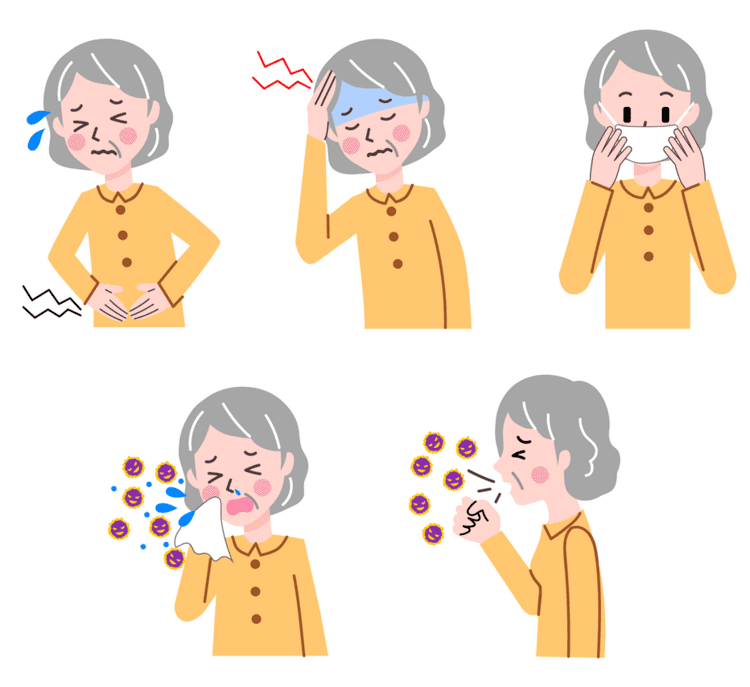 | ||
Similar Cancer signs and symptoms , Migraine , Paresthesia | ||
A symptom (from Greek σύμπτωμα, "accident, misfortune, that which befalls", from συμπίπτω, "I befall", from συν- "together, with" and πίπτω, "I fall") is a departure from normal function or feeling which is noticed by a patient, reflecting the presence of an unusual state, or of a disease. A symptom is subjective, observed by the patient, and cannot be measured directly, whereas a sign is objectively observable by others. For example, paresthesia is a symptom (only the person experiencing it can directly observe their own tingling feeling), whereas erythema is a sign (anyone can confirm that the skin is redder than usual). Symptoms and signs are often nonspecific, but often combinations of them are at least suggestive of certain diagnoses, helping to narrow down what may be wrong. In other cases they are specific even to the point of being pathognomonic.
Contents

The term is sometimes also applied to physiological states outside the context of disease, as for example when referring to "symptoms of pregnancy".
Types
Symptoms may be briefly acute or a more prolonged but acute or chronic, relapsing or remitting. Asymptomatic conditions also exist (e.g. subclinical infections and silent diseases like sometimes, high blood pressure).
Constitutional or general symptoms are those related to the systemic effects of a disease (e.g., fever, malaise, anorexia, and weight loss). They affect the entire body rather than a specific organ or location.
The terms "chief complaint", "presenting symptom", "iatrotropic symptom", or "presenting complaint" are used to describe the initial concern which brings a patient to a doctor. The symptom that ultimately leads to a diagnosis is called a "cardinal symptom".
Non-specific symptoms
Non-specific symptoms are self-reported symptoms that do not indicate a specific disease process or involve an isolated body system. For example, fatigue is a feature of many acute and chronic medical conditions, which may or may not be mental, and may be either a primary or secondary symptom. Fatigue is also a normal, healthy condition when experienced after exertion or at the end of a day.
Positive and negative
In describing mental disorders, especially schizophrenia, symptoms can be divided into positive and negative symptoms.
Possible causes
Some symptoms occur in a wide range of disease processes, whereas other symptoms are fairly specific for a narrow range of illnesses. For example, a sudden loss of sight in one eye has a significantly smaller number of possible causes than nausea does.
Some symptoms can be misleading to the patient or the medical practitioner caring for them. For example, inflammation of the gallbladder often gives rise to pain in the right shoulder, which may understandably lead the patient to attribute the pain to a non-abdominal cause such as muscle strain.
Symptom versus sign
A sign has the potential to be objectively observed by someone other than the patient, whereas a symptom does not. There is a correlation between this difference and the difference between the medical history and the physical examination. Symptoms belong only to the history, whereas signs can often belong to both. Clinical signs such as rash and muscle tremors are objectively observable both by the patient and by anyone else. Some signs belong only to the physical examination, because it takes medical expertise to uncover them. (For example, laboratory signs such as hypocalcaemia or neutropenia require blood tests to find.) A sign observed by the patient last week but now gone (such as a resolved rash) was a sign, but it belongs to the medical history, not the physical examination, because the physician cannot independently verify it today.
